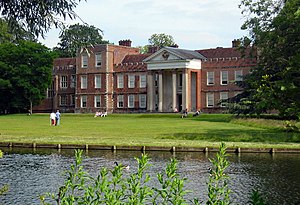The Vyne

The Vyne is a glorius 16th-century country house outside Sherborne St John, near Basingstoke, in Hampshire.
The Vyne was built for William Sandys, 1st Baron Sandys of the Vyne as he became, the Lord Chamberlain to King Henry VIII. The house retains its Tudor chapel, with stained glass. The classical portico on the north front was added in 1654 by Inigo Jones's pupil John Webb. In the mid-18th century The Vyne belonged to Horace Walpole's close friend John Chaloner Chute, who designed the Palladian staircase, whose magnificent apparent scale belies its actual small size.
The Vyne was bequeathed by its final Chute owner, Sir Charles Chute, to the National Trust in 1958.
Each year a number of concerts, plays and family events are run.
The grounds contain large woodland and a wetlands nesting site which is populated by swans and Common Redshanks. There are a number of woodland, wetland and parkland walking trails. Dogs are welcome into the grounds (on leads), in Morgaston Woods and the Organic Parklands (under direct control).
Inspiration for Lord of the Rings?
The Vyne holds an inscribed Roman ring as well as a lead tablet that speaks of a curse on the one who stole it. J R R Tolkien was asked to comment on it as an expert on Anglo-Saxon history, including its connection to a mine fabled to have been dug by dwarves, and a few days after began writing Lord of the Rings.[1]
Fine as the tale may be, Tolkien's cursed ring is from Norse mythology, from the Volsung Saga.
Outside links
| ("Wikimedia Commons" has material about The Vyne) |
- Vyne - information at the National Trust
